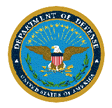Home
Abstract
Introduction
Literature Review
Methods
Results
Discussion
References
Appendix A
Appendix B
 REFERENCES
REFERENCES 
Altman, I., Taylor, D., & Wheeler, L. (1973). Self-disclosure
in isolated groups. Journal of Personality and Social Psychology, 26(1),
39-47.
Bauder, D. (2003, April 20). With embeds returning home, the Pentagon's
experiment drawing mostly favorable reviews. Associated Press. Retrieved
from http://www.myinky.com/ecp/entertainment/article/0,1626,ECP_738_1904951,00.html
Block, P., Cameron, G., & Yin, J. (2002). A comparative study: Does
the word-of-mouth communications and opinion leadership model fit epinions
on the internet. As accessed on internet: http://www.empiricom.org/glensite/PDF_articles/Epinions.pdf,
1-31.
Carr, D. (2003, March 31). Reporters' new battlefield access has its risks
and rewards. New York Times, pp. 1-4.
Chelune, G. J. (1979). Self-Disclosure: Origins, patterns, and implications
of openness in interpersonal relationships. San Francisco: Jossey-Bass
Publishers.
Cook, J. (2000). The social structure of political behavior: Action, interaction
and congressional cosponsorship. Unpublished doctoral dissertation, University
of Arizona.
Cook, J., McPherson, M., & Smith-Lovin, L. (2001). Birds of a feather:
Homophily in social networks. Annual Review of Sociology, 27, 1-41.
Derlega, V., Metts, S., Petronio, S., & Margulis, S. (1993). Self-Disclosure.
Newbury Park, CA; Sage.
Desehields, O., & Kara, A. (2000). Homophily effects in advertising
communication moderated by spokesperson's credibility. Marketing in a
Global Economy Proceedings. Sociometry, 37, 315-325.
Eisenberg, M., & Riley, P. (2001). Organizational culture. In Jablin,
F. & Putnam, L. (Eds.), The new handbook of organizational communication:
Advances in theory, research and methods (pp. 291-322). Thousand Oaks:
Sage publications.
Eisman, D. (2003, June 3). Clarke discusses revolution in war reporting.
The Virginian-Pilot, p. A5.
Fineman, S. (2001). Emotion and organizing. In Clegg, S., Hardy, C., &
Nord, W. (Eds.), Handbook of organizational studies (pp. 543-564). London:
Sage publications.
Gamble, T. K., & Gamble, M. (1996). Communication works. New York:
McGraw-Hill.
Grossman, A. (2003, April 11). Seeing a different war: 'Unilateral' journalists
took own path [Electronic version]. Hollywood Reporter, p. 11.
Halonen, D. (2003, May 19). The Pentagon experiment. Television Week,
p. 18.
Harper, J. (2003, March 4). Journalists prepare to the war from the battlefield.
Washington Times, p. A5.
Heath, R., & Bryant, J. (2000). Human communication theory and research:
Concepts, contexts, and challenges. Mahwah, N.J.: Lawrence Erlbaum Associates,
Inc.
Infante, D., Rancer, A., & Womack, D. (1997). Building communication
theory. Prospect Heights, IL: Waveland Press, Inc.
Iyengar, S., & Kinder, D. R. (1987). News that matters: Television
and American opinion. Chicago: University of Chicago Press.
Iyengar, S. (1991). Is anyone responsible? How television frames political
issues. Chicago: University of Chicago Press.
Jensen, R. (2003, April 7). Embedded media give up independence. The Boston
Globe, p. A19.
Kaid, L., & Wadsworth, A. (1989). Content Analysis. In P. Emmert &
L. Barker (Eds.), Measurement of communication behavior (pp. 197-217).
New york: Longman.
Kirk, R. E. (1995). Experimental design: Procedures for the behavioral
sciences (3rd ed.). Pacific Grove, CA: Brooks/Cole.
Keyton, J. (2001). Communication research: Asking questions, finding answers.
Boston: McGraw Hill.
Lazarsfeld, P., & Merton, R. . (1954). Friendship as a social process:
A substantive and methodological analysis. In Berger, Abel & Page
(Eds.), Freedom and control in modern society (pp. 18-66). New York: Van
Nostrand.
Martin, J. (1992). Cultures in organizations: Three perspectives. New
York: Oxford University Press.
McLeod, I. (2003, April 8). Deaths prove 'embeds' take real risk: Some
critics say media
'embedded' with troops provide biased reporting. Ottawa Citizen, p. A6.
McPherson, J., & Rotolo, T. (1996). Diversity and change: Modeling
the social composition of voluntary groups. American Sociology Review,
61, 179-202.
Ostrow, J. (2003, March 10). Winds of war ruffle disgruntled journalists.
Denver Post, p. F1.
Pacanowsky, M. & O'Donnell-Trujillo, N. (1983). Organizational communication
as cultural performance. Communication Monographs, 50, 126-147.
Pfau, M., Szabo, E., Anderson, J., Morrill, J., Zubric, J., & Wan,
H. (2001, April). The role and impact of affect in the process of resistance
persuasion. Human Communication Research, 27(2), 217-252.
Plante, C. (2003, April 1). Fox news, military reach deal on Rivera. CNN.
Retrieved July 7, 2003, from http://cnn.com
Soeters, J. (2000). Culture in uniformed organizations. In Ashkanasy,
N., Wilderom, C., & Peterson, M. (Eds.), Handbook of organizational
culture & climate (pp. 465-481). Thousand Oaks: Sage Publications.
Strupp, J. (2002, May 6). Revised circulation numbers are issued. Editor
& Publisher. Retrieved July 23, 2003, from http://www.editorandpublisher.com/editorandpublisher/headlines/article_display.jsp?vnu_content_id=1483297.
Thibaut, J., & Kelly, H., (1959) The social psychology of groups.
New York: Wiley
Touhey, J. (1974). Situated identities, attitude similarity, and interpersonal
attraction. Sociometry, 37, 363-374.
Van Leer, C. & Trujillo, N. (1986). On becoming acquainted: A longitudinal
study of social judgment processes. Journal of Social and Personal Relationships,
3, 375-392.
Weaver, D. H. (1981). Media agenda-setting in a presidential election.
Westport, CT: Praeger.
Wheeless, L., & Grotz, J. (1977). The measurement of trust and its
relationship to self-disclosure. Human Communication Research, 3, 250-257.